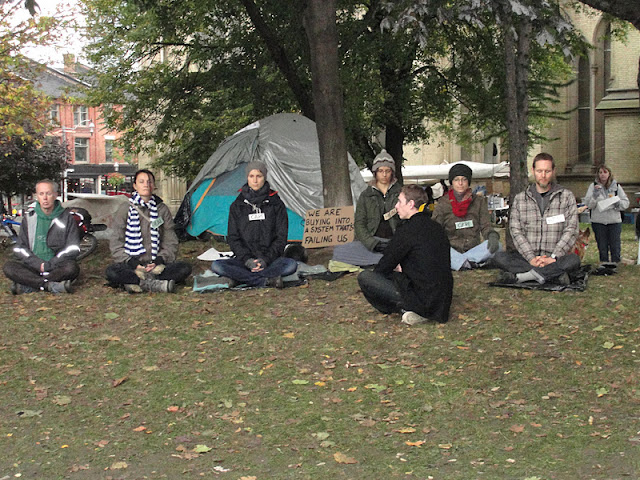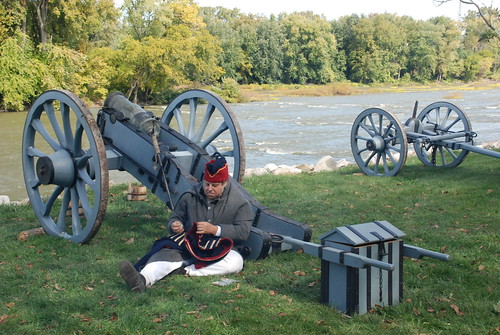 |
| Altar on Sunday |
Last Sunday I had a bifurcated day where I spent the morning
at my local parish in an upscale suburban environment having communion plus a
thanksgiving luncheon and the afternoon downtown at the St. James Park Occupy
Toronto encampment. You can see from the pictures in this post and the next
that there was quite a contrast.
 |
| Thanksgiving lunch |
Lots of food at the luncheon including
poached salmon, ham with pineapple, pork tourtière (a Quebec dish consisting of
a pie with a minced pork or beef filling), broiled potatoes with rosemary, rice
and other dishes plus a choice of red or white wine.
 |
| Dessert |
A variety of deserts were available with
coffee or tea. I was certainly full when I finished.
 |
| Tables |
Nice
harvest décor on the dining tables.
 |
| Two 75th birthdays |
Contrast this with delivering garbage
bags as well as disposable utensils, cups and plates to the encampment via the
public transit because many of the roads downtown were closed due to the
Toronto marathon which was also happening on Sunday.
 |
| St. James Cathedral from park |
St. James Cathedral is the seat of the
diocesan bishop in the Toronto Anglican diocese and the park which contains a cemetery where many of the early Ontario luminaries are buried lies on
the east side of the building. This was once a very prosperous part of the city
but declined over the years into a relatively poor area which has recently been
gentrified by new arrivals. Queen Elizabeth and Prince Phillip attended a service at this church last summer. It`s a good place to attend if you
like Anglo catholic pageantry and rubbing shoulders with the local elite.
 |
| St. James Altar |
The original church was built in 1807
but was damaged and robbed by American troops in the War of 1812. After a
number of replacements burned down, the current church was built in 1853 with
the bells installed in 1865 and the spire completed in 1875.
 |
| Interior |
This church was the preserve of the
Family Compact, a small group of plutocrats who ran Ontario between the War of
1812 and the Upper Canada Rebellion of 1837 which makes the Occupy Toronto
having its encampment beside the cathedral ironic since there are many
similarities between the current economic environment and that of the early 19th
century including the collusion of the government with the plutocrats.
Below are the park gardens which were off limits to the
encampment and in return the church supplied electricity to the occupiers.
 |
St. James Park gardens
|


















































